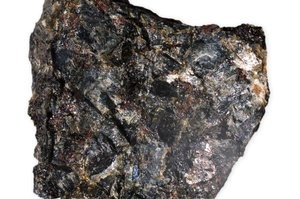There is no question that asbestos is harmful to humans. It would be fair to assume that most adults in America are familiar with this fact. Many people know asbestos can cause cancer, but this pretty much sums up the general public’s knowledge about asbestos, including where it comes from.
 According to a recent news feature from Oregon Live, asbestos is a naturally occurring substance, and geologists estimate that anywhere between nine and 12 percent of the Earth’s crust contains asbestos. There are, however, various types of asbestos. The most common type of asbestos used in building construction in the United States is known as chrysotile.
According to a recent news feature from Oregon Live, asbestos is a naturally occurring substance, and geologists estimate that anywhere between nine and 12 percent of the Earth’s crust contains asbestos. There are, however, various types of asbestos. The most common type of asbestos used in building construction in the United States is known as chrysotile.
As our Boston mesothelioma attorneys can explain, chrysotile asbestos is often mined in large chunks, and these large gray rocks can be covered with other types of asbestos. For example, a chrysotile asbestos rock might be covered with a green material that is known as serpentine asbestos, which is another commonly found form of the deadly mineral. While many think asbestos is a man-made substance, it is, in fact, a naturally occurring substance made up of six silica elements. While there are many types of asbestos, chrysotile, also known as “white asbestos,” is a member of the serpentine group of phyllosilicate minerals.
While asbestos has the helpful qualities of being resistant to heat, fire, caustic chemicals and electricity, these were not the main reasons asbestos was used in home construction. While builders say these qualities are a bonus in most applications, the main reason for using the material was because it was a very effective binder. For this reason, it was used to construct a wide variety of building materials and for joining building martials together. For example, many building materials were held together through the use of what is known as gun plastic cement product. Colt Gun Plastic Cement was one of the more popular products and was loaded with asbestos.
Chrysotile asbestos is broken down into three subtypes, but is it is very difficult to determine which subtype you are dealing with, absent a polarized light microscope. On of the reasons this material is so dangerous to humans deals with the nature of the individual fibers. Individual chrysotile asbestos fibers are so small and soft that they do not break down easily. This means when the fibers are inhaled, they can become embedded in the lung tissue or a layer of tissue known as the mesothelium, where they can metastasize into cancer. Since they do not break down, they remain trapped in the organ tissue of victims, and there is no way to get them out. It is even extremely difficult to see the fibers using standard medical diagnostic equipment. It is normally only the tumors that are discovered, and, by the time this happens, the patient is normally suffering from a very advanced stage of mesothelioma.
The scientist featured in the Oregon Live article hopes that educating the general public about the dangers of working with the deadly material convinces people to use extreme caution when working in an environment that has any risk of asbestos exposure.
If you or a loved one is diagnosed with mesothelioma in Boston, call for a free and confidential appointment at (617) 777-7777.
Additional resources:
Ed Edinger, Asbestos Training Project owner, gives us an up-close look at one of the most commonly used types of asbestos., September 24, 2015, Oregon Live, by Teresa Mahoney
More Blog Entries:
Mesothelioma Lawsuits for Shipyard Workers, July 30, 2014, Boston Mesothelioma Lawyers Blog
 Mesothelioma Lawyers Blog
Mesothelioma Lawyers Blog

